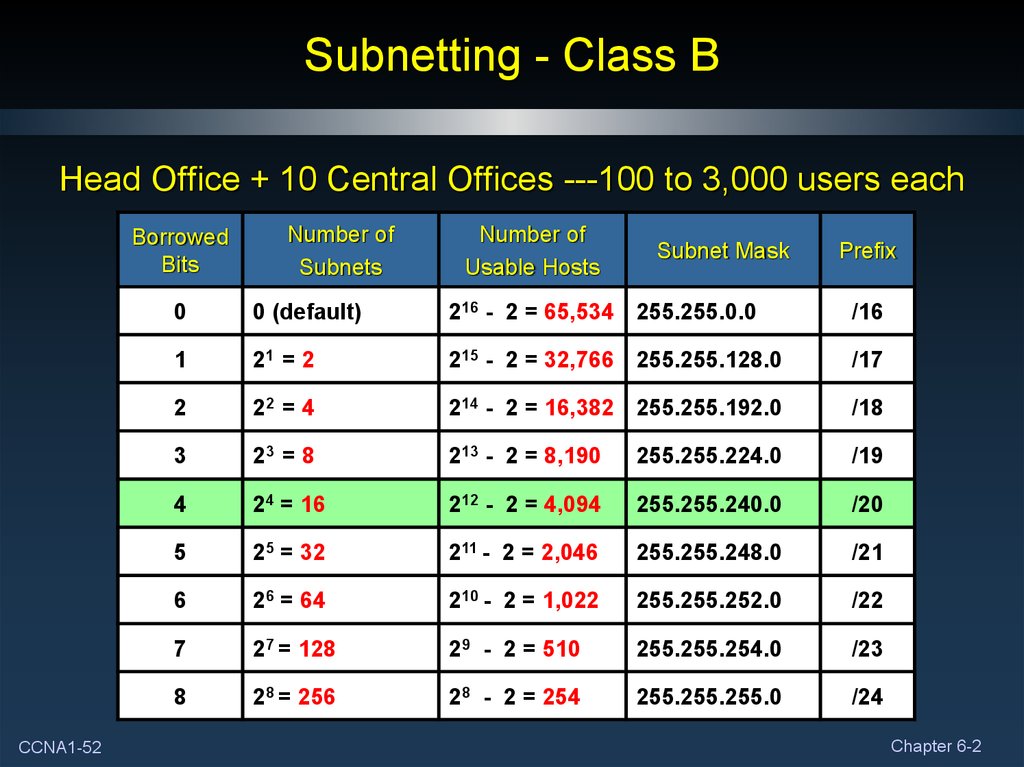
Every single computer that is connected to a subnet shares an identical portion of the IP address.

Collectively, the smaller networks are referred to as subnetworks (or subnets), and the singular subdivision is a subnetwork (more commonly referred to as a subnet). So if our range is 1 then we know our 90th subnet is 172.16.89.0, the 140th is 172.16.139.0, and so on. Subnetting is the process of dividing one network into smaller networks. This subnet chart is an essential reference for finding the number of hosts, subnet mask, and other subnet details. we have 3 Subnetting bits, we can make 8 (23 8) additional networks. If we look at our subnetting chart we see that our range is 1, which makes this a really simple process. many bits are required, we use the power of 2. We'll start with the IP address 172.16.0.0/24, this is also the network address for the first subnet, so that's one down. Subnetting creates several interconnected networks under a single address space, viewing each section as a sub-network, or subnet, rather than a collection of independent networks. Lets go ahead and figure out what the network address is for these subnets. A subnet is a widely-used practice in network management that involves breaking up a network into sections. If we look at our mask we see that we get 256 subnets, I'm going to create loopbacks in the 1st, 90th, 140th, 211th, and the last subnet. Instead of creating 40 loopback interfaces I'm only going to create 5, but I'm going to create them in certain subnets. We will go ahead and use a /24 mask on a class B address as it provides room for expansion in both subnets and hosts. Computers participating in a network such as the Internet each have at least one network address. If we look at the subnetting chart we see that none of the class C masks will work, but several class B masks will provide the needed subnets and hosts. The concept of subnetting the IPv4 address space 200.100.10.0/24, which contains 256 addresses, into two smaller address spaces, namely 200.100.10.0/25 and 200.100.10.128/25 with 128 addresses each. This LAN requires 40 subnets with 100 hosts per.

The last LAN we have to create is connected to router 5. Based on these parameters, subnet calculator will immediately display the number of available IP addresses per subnet, and a range of IP addresses for each of the subnets, including start address, end address, network address, and broadcast address.
#POWER OF 2 TABLE SUBNETTING CHART ANDROID#
Android App Development with Kotlin(Live).
#POWER OF 2 TABLE SUBNETTING CHART FULL#
Full Stack Development with React & Node JS(Live).Java Programming - Beginner to Advanced.



 0 kommentar(er)
0 kommentar(er)
